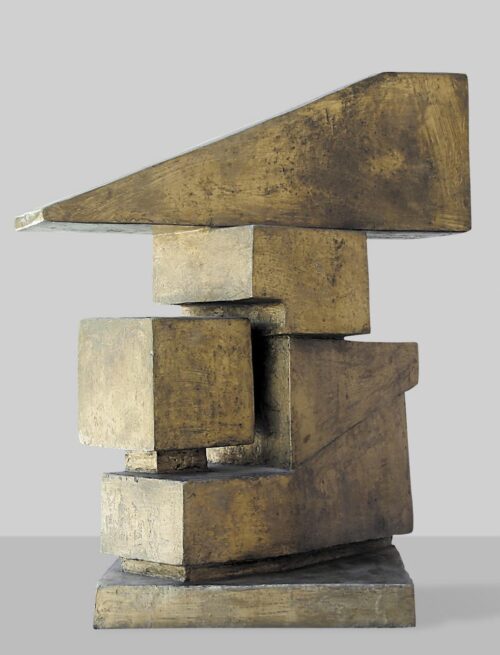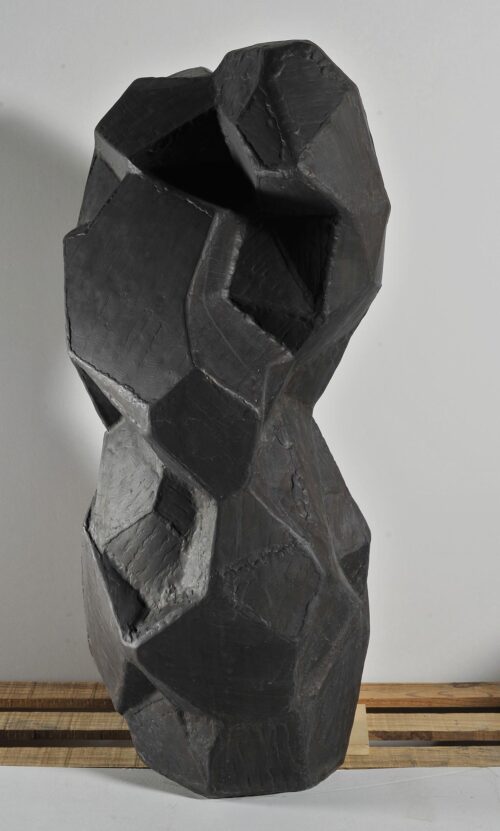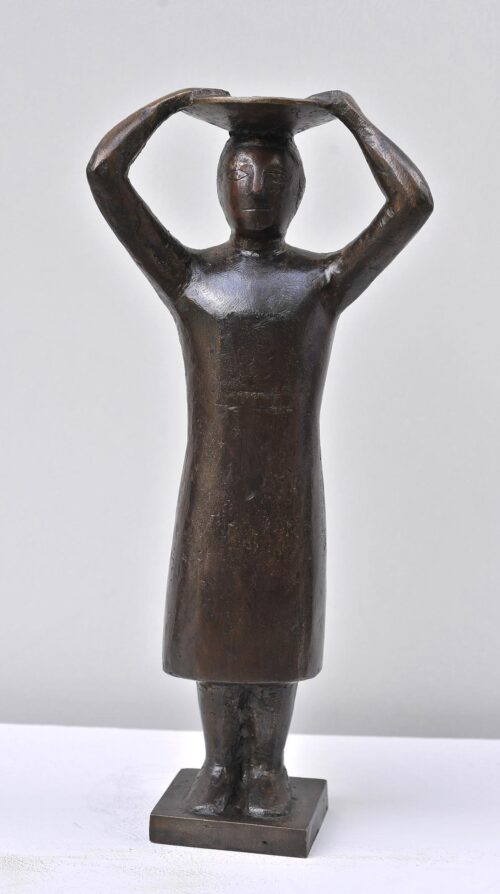
Loukopoulos Klearchos (1906 - 1995)
Superimposition, 1977
He took his first drawing lessons from Konstantinos Maleas, studied sculpture at the Academie Colarossi in Paris (1934-1936) and became friends with Thanassis Apartis. He also studied at the Law School, University of Athens and attended theatre and violin courses at the Athens National Conservatory. An artist of broad intellectual interests, he published and translated many articles on art. In 1963, he was awarded by AICA’s Greek section and in 1971 received a Ford scholarship. The following year, in protest against the Greek junta, he rejected the first national prize. He was founding member of “Armos” [Junction] group as well as of the “Group for Communication and Education in Art”.
His work was presented in solo exhibitions and group events, including Panhellenic exhibitions, the Salon des Independants in Paris, exhibitions of the “Armos” group, the Biennale of Venice in 1956 and 1966, the Sao Paulo and Alexandria Biennale in 1959, the Europalia in Belgium (1982) and “Metamorphoses of the Modern” at the National Gallery, Athens (1992). In 1997, a posthumous retrospective exhibition of his work was mounted at the Vafopouleio Cultural Centre in Thessaloniki.
Beginning with realistic, anthropocentric works, invoking Archaic sculpture or folk art, Klearchos Loukopoulos joined abstraction, after a period of transition, when he was inspired by Mycenaean figurines. At the same time, he abandoned marble and stone and switched to metal, creating works featuring polyhedral forged metal forms, invoking Mycenaean stone wall masonry. Based on various combinations of geometric forms, extended in vertical or horizontal patterns in space, his work after 1970 developed constructivist traits. In a broader context of creative activity, he collaborated with architects in projects for the Hellenic Tourism Organization (E.O.T.) stores and hotels.

Superimposition, 1977

Acrocorinth, 1965

Woman with Basket, [1954]

We use cookies to make our site work properly, to personalize content and ads, to provide social media features and to analyze our traffic. We also share information about how you use our site with our social media, advertising and analytics partners. Read the Cookies Policy.
These cookies are necessary for the website to function and cannot be switched off in our systems. They are usually only set in response to actions made by you which amount to a request for services, such as setting your privacy preferences, logging in or filling in forms. You can set your browser to block or alert you about these cookies, but some parts of the site will not then work. These cookies do not store any personally identifiable information.
If you disable this cookie, we will not be able to save your preferences. This means that every time you visit this website you will need to enable or disable cookies again.
These cookies tell us about how you use the site and they help us to make it better. For example these cookies count the number of visitors to our website and see how visitors move around when they are using it. This helps us to improve the way our site works, for example, by ensuring that users find what they are looking for easily. Our website uses Google Analytics for statistics reporting.
Please enable Strictly Necessary Cookies first so that we can save your preferences!